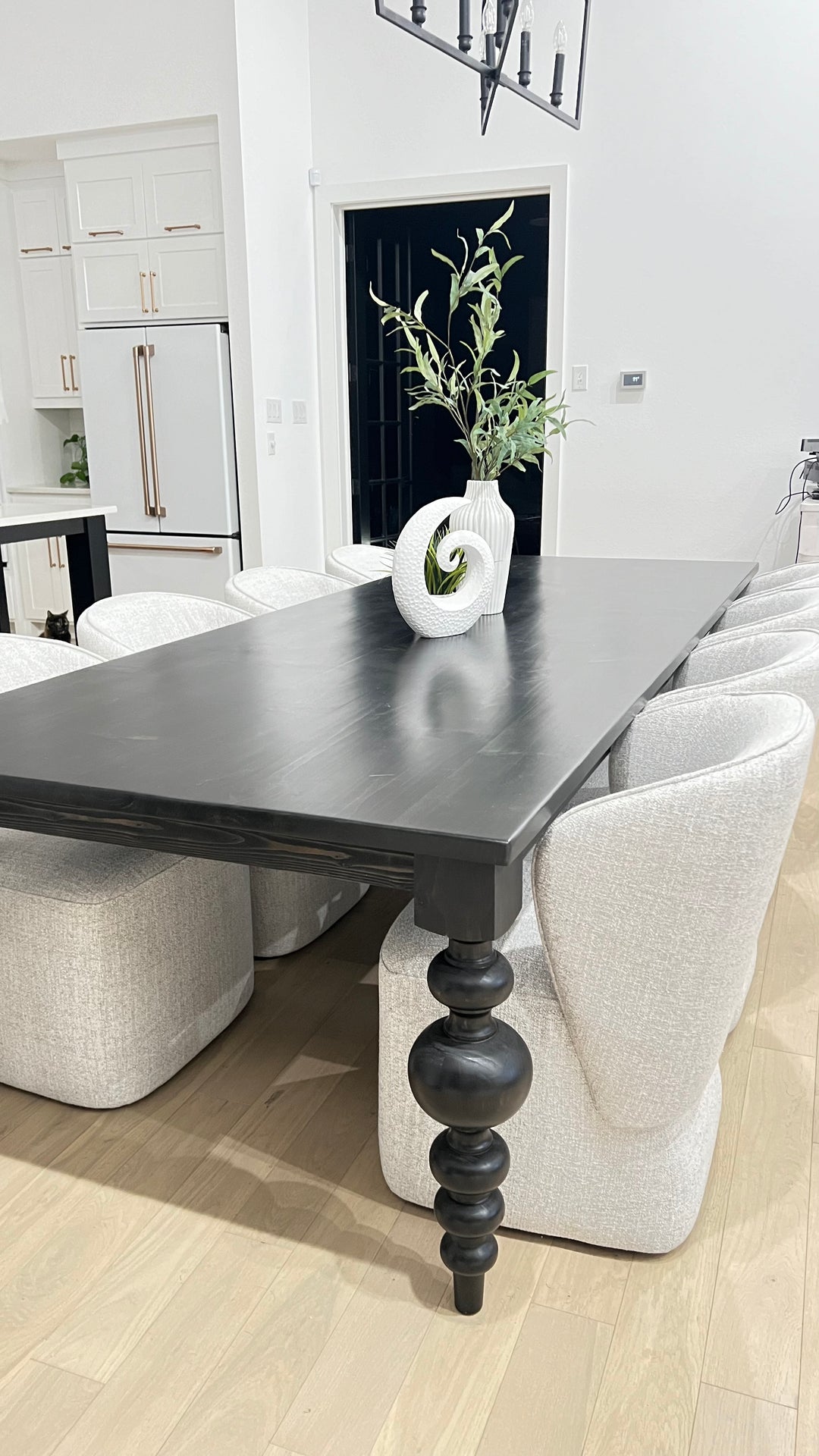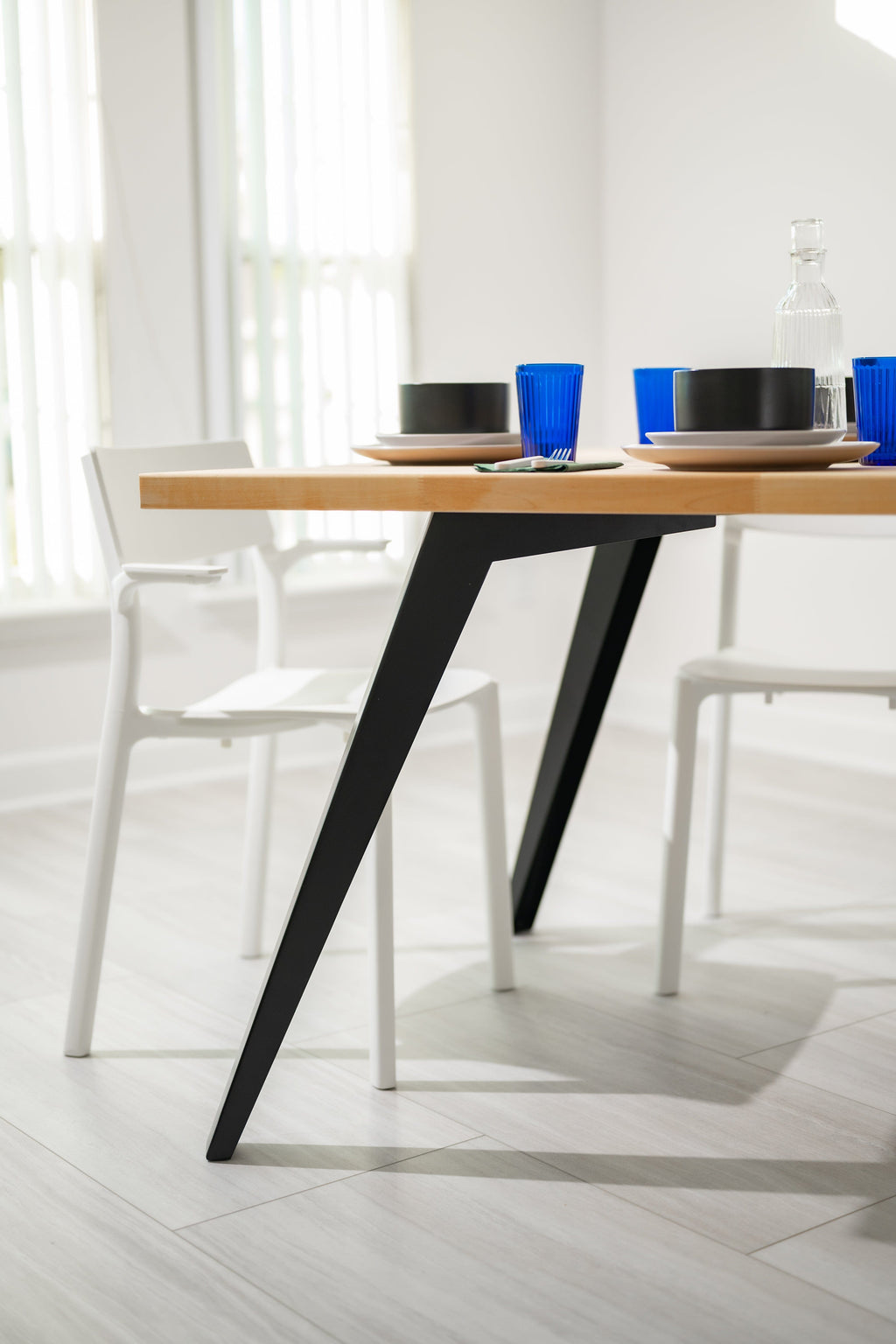How to Pick the Perfect Eating Area Table Legs for Your Home Decoration
Choosing the optimal dining area table legs is a nuanced process that requires mindful factor to consider of different aspects, including your room constraints, visual choices, and functional requirements. The interplay in between styles, materials, and dimensions can dramatically influence the ambiance of your eating area, making it necessary to approach this decision carefully.
Assess Your Eating Space
Assessing your eating area is essential for picking the right table legs that complement both aesthetic appeals and functionality. Begin by gauging the dimensions of your eating area, including ceiling elevation, flooring area, and proximity to other furnishings. This info will certainly help establish the suitable dimension and height of your dining table, which straight influences the option of table legs.
Following, consider the design and layout of your dining area. An open-concept design may benefit from table legs that use aesthetic agility, such as slender steel or acrylic alternatives. Conversely, a more traditional setup might require durable wooden legs that supply a feeling of permanence.
Review the existing color combination and materials in your eating location. Balancing the table legs with these components produces a natural look that enhances the overall decor.
Eventually, a comprehensive assessment of your eating room will certainly assist you in making an informed choice, making sure that your table legs not only enhance the aesthetic allure however also offer functional functions.
Consider Your Style Preferences
When picking dining-room table legs, it is vital to review your individual design preferences, as they significantly affect the general aesthetic of your dining space. Your selection of table legs can either enhance or contrast with existing decor, making it vital to align them with your favored interior decoration style.
If your home leans towards a modern-day aesthetic, take into consideration smooth metal or minimal wooden legs that provide a tidy, uncluttered appearance. For an extra standard method, luxuriant wooden legs with detailed carvings can include a touch of style and class. Industrial styles take advantage of durable, basic materials such as redeemed wood and metal combinations, showing a rugged beauty.
In addition, farmhouse and rustic styles frequently favor strong, beefy legs that evoke a feeling of heat and convenience. On the other hand, if your decor is diverse, you might pick unconventional shapes or a mix of products to develop visual rate of interest.

Evaluate Product Options
The option of product for eating room table legs plays an essential function in both resilience and visual allure. Usual materials consist of wood, metal, and composite choices, each offering distinct features that can affect the total appearance and long life of your table.
Timber is a timeless choice, understood for its heat and convenience. Woods like oak and walnut give remarkable strength and can be finished in various discolorations to match any decor. However, softwoods like pine are more prone to dents and scrapes, making them less perfect for high-traffic areas.
Metal legs, frequently crafted from steel or aluminum, show modernity and commercial appeal. They are immune and extremely durable to use, making them suitable for families with youngsters or regular gatherings (dining room table legs). In addition, steel can be finished in various shades, improving the personalization possibilities
Composite products, such as MDF or laminate, offer price and diverse designs. While usually less long lasting than strong wood or metal, they can still provide an elegant look and are typically easy to keep.
Ultimately, the product you select must straighten with your way of life, visual preferences, and the degree of use your table will experience.
Determine Elevation and Size
Choosing the appropriate elevation and dimension for your dining-room table is crucial for both performance and convenience. The conventional elevation for dining tables normally ranges from 28 to 30 inches, allowing enough legroom for many people when seated. It is crucial to take into consideration the dimensions of your dining room and the kinds of chairs you plan to utilize.

Moreover, think about the percentages of your dining-room. A larger table in a spacious area can create a grand ambiance, while a smaller table works well in even more intimate setups. Inevitably, the appropriate elevation and dimension will certainly balance with your general decoration and improve the Going Here dining experience for you and your guests.
Explore Customization Possibilities

In addition, the style of the legs can be tailored to fit different designs, such as rustic, contemporary, or commercial. For instance, tapered legs can evoke a mid-century modern feel, while chunky, block-style legs may reverberate with standard or farmhouse design.
Homeowners can likewise explore color finishes, from official site all-natural wood discolorations to paint, allowing them to match or contrast with the table top and bordering style.
Additionally, leg height can be adapted to accommodate details seating plans or individual preferences, improving both convenience and performance.
Finally, unique decorations, such as makings or ornamental braces, can better personalize the table legs, making the eating experience not just a statement but a meal piece in the home. By taking into consideration these personalization alternatives, homeowners can develop a dining space table that really reflects their originality.
Conclusion
Selecting the excellent eating space table legs calls for mindful factor to consider of numerous factors, including the dimensions of the dining space, style choices, product durability, and preferred height. Personalization options even more boost the capacity to attain a cohesive aesthetic that matches the total design. By methodically examining these aspects, home owners can ensure that the selected table legs not only meet functional needs but additionally add favorably to the dining experience and ambiance of the home.
Selecting the ideal dining space table legs is a nuanced procedure that requires careful consideration of various aspects, including your room restrictions, aesthetic preferences, and useful requirements.Examining your eating space is essential for choosing the right table legs that match both aesthetic appeals and performance.When establishing size, gauge the location where the table will be placed to ensure it fits conveniently, allowing for at least 36 inches of clearance around the table for simple movement. A larger table in a spacious location can produce a grand atmosphere, while a smaller table functions well in more intimate settings.Choosing the ideal dining space read here table legs needs cautious factor to consider of different factors, consisting of the measurements of the eating space, style preferences, product durability, and wanted elevation.